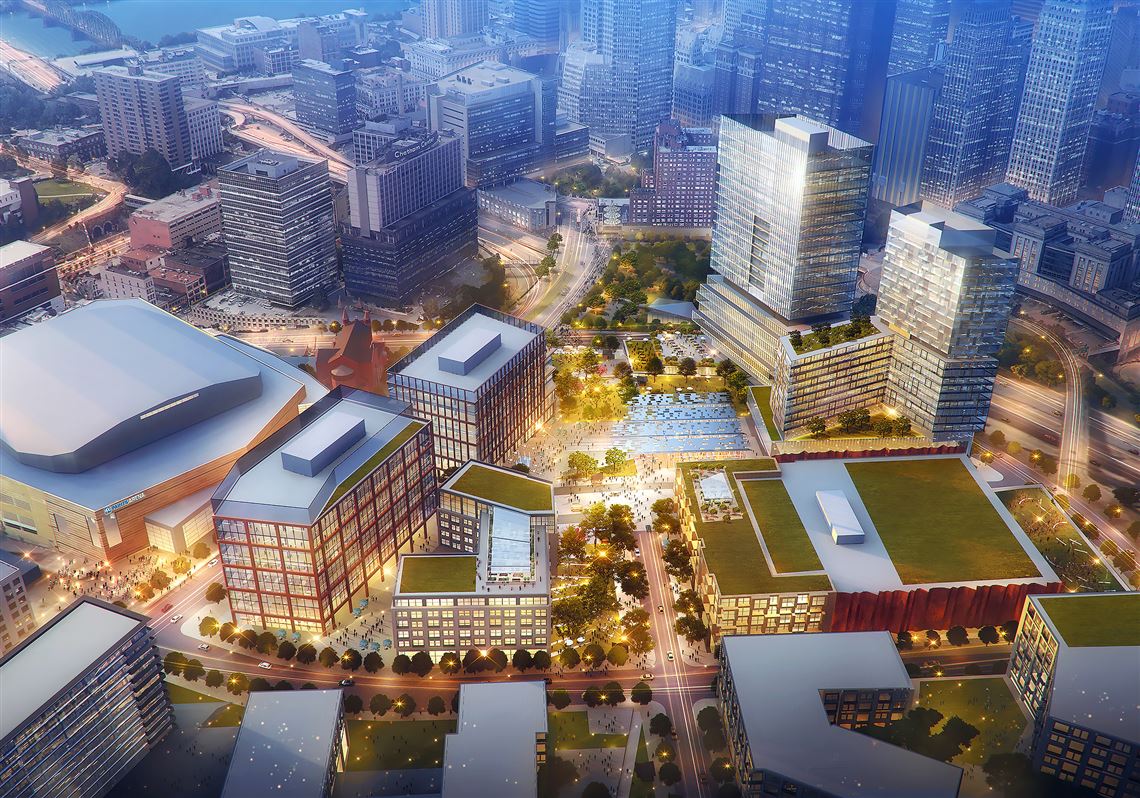
January 17, 2020
OHM Advisors, Forrest Gibson: The Center of Energy
Reflecting on history to reconnect the Hill District to Downtown Pittsburgh Forrest Gibson; July 31st, 2019 5:30 AM During its heyday, from the 1930s through the 1950s, Pittsbu

Reflecting on history to reconnect the Hill District to Downtown Pittsburgh
During its heyday, from the 1930s through the 1950s, Pittsburgh’s Hill District became known as “the crossroads of the world” by Harlem Renaissance poet Claude McKay, thanks to its rich cultural heritage. Fast-forward nearly a century and there’s no denying the neighborhood has faced an uphill battle. That’s about to change as the Penguins organization and its development partners move forward with a new plan to redevelop the site of the former Civic Arena.
Now is the time for residents to reconnect at this historic space in Pittsburgh’s diverse landscape as a place that brings people and cultures together — an opportunity to capture the energy of the community.
The challenges in urban redevelopment are many. The vision for the Lower Hill District addresses many of those challenges as it aims for inclusivity and cohesion. It embraces the needs of the residents and creates economic opportunities for community members, while also attracting new growth.
By working closely with local elected officials, the Community Collaboration and Implementation Plan committee, and other community partners, the redevelopment team assembled by the Penguins has created a solution that is not only pragmatic and inspiring, but also inclusive of the Pittsburgh community and spirit.
Here’s why I believe this is the right plan: We have the right mix of development partners driven by public input, the right mix of land use to both spur the economy and allow for recreation, and the right mix of both the old and the new aesthetic for an attractive and cohesive neighborhood.
The team making this vision a reality includes Intergen, a Pittsburgh-based minority-owned firm that will be building new housing and small offices; the Buccini/Pollin Group, which is developing office, entertainment, hotel as well as food and beverage venues; Gensler, an internationally acclaimed design firm with rich accomplishments in the Pittsburgh area; and ourselves, OHM Advisors, a community advancement firm with expertise across architecture, engineering and planning. Together, we have listened carefully to the community.
As a result, this “Center of Energy” will reconnect the Hill District physically, emotionally and economically. When developing the vision for the site, we firmly believed that a continuous pedestrian-friendly greenspace would be integral to inviting residents and guests to move effortlessly from one end to the other — from the Hill District to Downtown. Within the mixed-use land plan, greenspace is the key to welcoming shoppers to new venues, business professionals to new offices and residents to new housing. Instead of dividing the site into discrete pockets of development, as an earlier master plan had intended, the new master plan brings a balanced mix of business, residential and public space in which everything flows seamlessly.
When done with vision and care, revitalization can spur economic activity through new jobs and lasting tax base, while encouraging and sponsoring small business entrepreneurs. This new plan will provide opportunities for residents to start or relocate their businesses and make a major impact on their future. The positive impact of revitalization is significant: When fully developed, the “Center of Energy” is anticipated to attract more than $500 million in private investment, generate more than 4,000 construction and 3,000 permanent jobs, and generate more than $25 million in annual tax revenues that go back into the community.
Finally, the architecture of the new buildings is also the right mix, designed specifically to create a natural transition from the beauty of the Hill District’s historic homes to the modernity of Pittsburgh’s bustling Downtown. In designing the initial residential units along Crawford Street and Wylie Avenue, we were very intentional in remaining authentic to the community. It will welcome a mixture of individuals and families across previous economic boundaries.
These are only a handful of the careful considerations the Penguins’ redevelopment team has carefully considered and incorporated for the new Lower Hill vision. From uncovering unique funding structures to staying committed to sustainability, our vision is one that will advance the entire city.
We invite all of Pittsburgh to learn more about this exciting development that re-connects the Hill District with Downtown and participate in its realization. It is all about being vested, as well as invested, in our community.
Forrest Gibson is a principal architect, planner and urban design group leader at OHM Advisors.
Share This Story, Choose Your Platform!
Marx Layne is your competitive advantage.
Your reputation and success are our only concerns.
